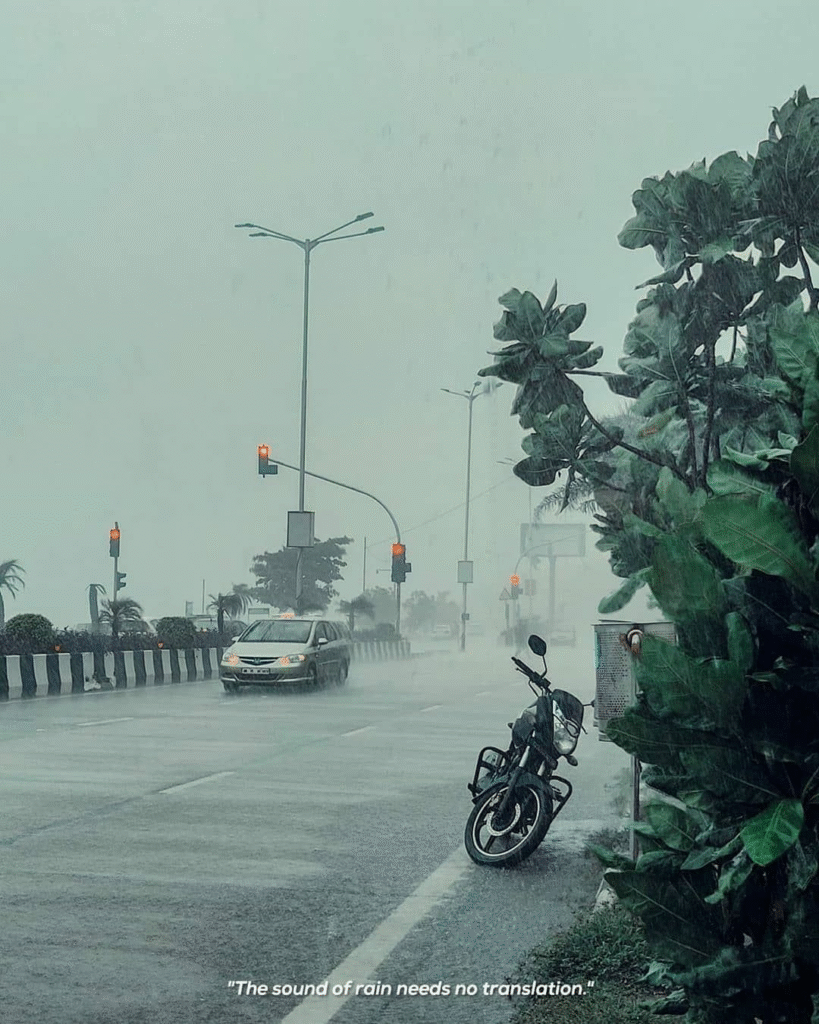By Akshika Jangid
A New Chapter in Urban Mobility
Until the dawn of the 21st century, India’s urban transport policy prioritized moving vehicles over moving people, leading to long-standing neglect of the public transport sector. As cities expand and the number of private vehicles on the roads continues to surge, the pressure on our transport networks grows heavier each day. To keep traffic from grinding to a halt, it makes sense to look beyond the usual buses and metros and explore flexible, motorised alternatives—what we call now as an intermediate public transport or paratransit.
Services like taxis, autorickshaws, and bike-taxis fill in the gaps left by mass transit, offering on-demand rides without the constraints of fixed routes or schedules. This evolving role in urban mobility soon caught the government’s attention, highlighting the need for clear rules to guide and regulate this vital sector.
On July 4, 2025, the Maharashtra government officially notified the Bike Taxi Rules 2025, opening the door to app-based electric two-wheeler taxis in the state. Framed as part of the state’s sustainable transport vision, the policy aims to offer affordable, last-mile mobility solutions while cutting down on carbon emissions and easing urban congestion.
Under the new rules, only electric two-wheelers registered as transport vehicles can operate as bike taxis. Aggregators—like Rapido, Ola, Uber—must have at least 50 electric bikes registered in Maharashtra, secure a five-year operating license for ₹1 lakh, and furnish a ₹5 lakh security deposit. In a bid to make them instantly recognisable, these bikes will sport a bright yellow paint job emblazoned with the words “Bike Taxi”, accompanied by clean, matching yellow helmets for passengers’ safety and comfort. To ensure sustainable working practices, each trip will be capped at a maximum of 15 kilometres, while driver duty hours will be limited to eight hours per day.
Local flavour is built into the policy: regional transport offices (RTOs) will have the authority to set fares, introduce live tracking and emergency response systems, and municipal bodies will oversee how bike taxis blend seamlessly with the city’s public transport network. On the tech front, all apps must strictly follow the Digital Personal Data Protection Act, 2023 to safeguard customer information and maintain trust.
The Bigger Picture: Green Goals & City Convenience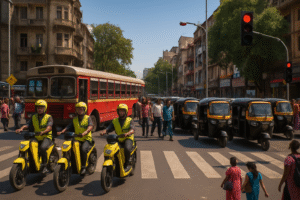
Among the diverse paratransit options available in India, bike taxis—motorbikes operating as taxis—stand out as an expedient option for urban mobility, especially in states like Maharashtra where electric bike taxis align with ambitious climate and city planning goals.
Although some regions readily embrace bike taxis, others hesitate due to regulatory uncertainties regarding mobility as a service. Yet, proponents passionately highlight how these electric bike taxis capture the sweet spot of eco-friendly, affordable, and convenient transport.
Electric bike taxis offer a host of tangible benefits: they provide cost-effective rides for short city trips, helping ease the daily commute budget while slashing pollution. Their agility solves the persistent first- and last-mile connectivity challenge by bridging gaps between metros or buses and commuters’ final destinations. Beyond efficiency and economics, formalising these services transforms informal, unregulated rides into accountable, safer journeys for female riders— all safeguarded by insurance and regular safety checks.
The policy has garnered praise from environmental advocates and women’s groups alike, reflecting its broader social impact.
The Pushback: Fear on Three Wheels
While Maharashtra’s new electric bike taxi policy is winning applause from environmentalists and mobility innovators, not everyone is ready to ride along. The Auto Rickshaw Unions, led by figures like Shashank Rao, view the policy as an existential threat. Many drivers are still recovering from income losses incurred during COVID-19 and fear that lower-priced bike taxis will erode their already fragile earnings.
For them, the sting runs deeper than economics. Union leaders also point out that bike taxi services started illegally in Maharashtra, often using private (white) number plate bikes. “Instead of shutting them down, the government is now rewarding them with legal approval,” an autorickshaw driver in Mumbai remarked.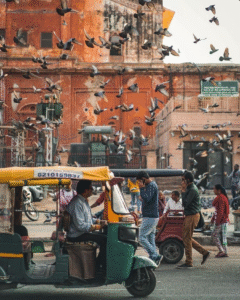
Critics are raising profound questions regarding safety and urban planning concerns which are definitely a major issue, whether they are bike taxis or an individual on a two wheeler. Cities like Mumbai and Pune are already grappling with chronic congestion. The introduction of a large fleet of bike taxis, zipping through narrow lanes and crowded intersections, may add to the complexity. Two-wheelers don’t occupy as much space as cars, but their swift, often unpredictable movement could heighten traffic chaos if not properly managed. Without thoughtfully redesigned road infrastructure and effective traffic management, the urban landscape risks becoming a patchwork of snarls and near-misses.
The research shows that India has the highest number of road accidents, driven by reckless driver behaviour, non-compliance with traffic rules such as not wearing helmets and other human errors. Beyond congestion, there’s the fundamental question of urban design. Indian city streets, often built for mixed traffic including pedestrians, cycles, autos, and motorbikes, may not be ready to safely absorb a surge in high-speed bike taxi traffic.
Thus, narrow or non-existent sidewalks with poor street lighting, and absence of dedicated lanes for two-wheelers all compound the safety risk.
Economic Strain & Uneven Playing Field
Many autorickshaw unions state that many of their members are still recovering from pandemic related financial troubles and the new competition could push them into economic distress. Then comes the question of implementation. Critics argue the policy feels tailor-made for private aggregator platforms, rather than for the larger public interest. Many stakeholders worry about the actual enforcement of rules, effective accident insurance and women’s safety provisions given previous lapses in transport safety.
The requirement to promote electric vehicle adoption through the Bike Taxi policy involves a compliance framework that may impose substantial implementation challenges.
Ironically, even the very companies that stand to benefit face their own storm. The push to promote electric vehicles is noble, but the compliance framework demands significant investment in vehicles, infrastructure, and operational upgrades. These demands run contrary to the flexible, low-asset structures that aggregators typically rely on, potentially hampering their ability to scale and sustain bike taxi operations under the new regulations.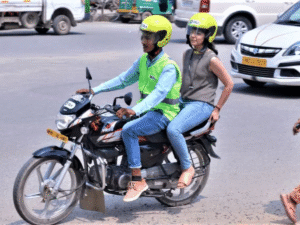
In the end, Maharashtra’s bike taxi policy isn’t just a green mobility experiment—it’s a collision point for competing interests: climate ideals, commuter convenience, worker livelihoods, corporate agility, and the gritty realities of urban safety. Whether this ride ends in progress or pileup depends not just on bold policymaking, but on equally bold, fair, and transparent execution.
Is Pollution really the real reason for the ban?
Pollution became yet another issue for banning the Bike Taxis. It is indeed a concerning factor that the number of bikes running on fossil fuels will lead to air pollution but on the other hand, we all need to see the other aspect of how the passengers would travel if bike taxis are removed entirely. The real question is: are we pulling riders away from public transport like buses and trains, or just replacing cabs, autos, and private cars? If it’s the latter, bike taxis might actually help—reducing congestion and pollution instead of worsening it.
There’s scant hard data on the real-world shifts in commuter behavior yet. But anecdotal evidence from bike taxi riders suggests that, for many, this isn’t a full-time job but a side hustle—often fitted neatly into their own daily commute, lowering their transportation costs. If riders would be making these journeys anyway, and their passengers might have otherwise taken a more polluting cab or auto, then blaming bike taxis for adding to pollution is questionable.
Plus, regulations like the Motor Vehicle Aggregator guidelines (2020) cap the number of trips per rider using a private vehicle, making it tough for anyone to treat this as a full-time gig.
On the broader stage, while Niti Aayog views bike taxis as a sustainable solution for last-mile connectivity, state governments sometimes respond to pressure—like that from the autorickshaw lobby—by pushing for bans. This misses the bigger picture: every mode of transport, from walking to cycling to bike taxis and autos, has its part to play based on distance, accessibility, cost, and user needs. Banning bike taxis not only limits citizens’ options but denies cities a practical, flexible tool for easing mobility challenges. So rather than casting them as villains, we must embrace bike taxis as a valuable thread in the city’s transport tapestry.
Striking the Right Balance: Challenges that Go Beyond the Policy Text
The safety and economic concerns highlight the complexity of bringing innovation to urban mobility. It’s not simply about introducing electric bike taxis—it’s about ensuring the roads are safe, the competition is fair, and the livelihoods of frontline workers is protected.
Effective enforcement, continuous infrastructure development, and meaningful stakeholder engagement between autorickshaw unions, commuters, and local authorities is extremely crucial. It is only through inclusive, well-rounded implementation, cities can truly reap the benefits of greener, more flexible transport without falling prey to traffic chaos, safety hazards, and social disruption.
Battle for Urban Roads
The urban transport debate is fundamentally a struggle over the “Right to the city” concept as to really shape the city life- should policies champion green innovation or safeguard established livelihoods? Maharashtra’s approach, favoring electric-only bike taxis and limiting how far they can go, aims to strike a balance, carving out space for innovation without trampling traditional rickshaw services. However, whether this delicate design will prevent disputes on the ground is still uncertain. 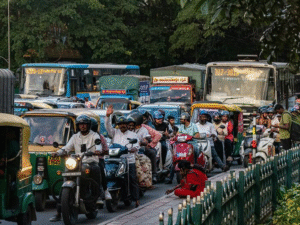
What Lies ahead
For these rules to truly transform urban commuting, experts insist on airtight enforcement to prevent illegal rides, robust transition programs and EV financing for auto drivers looking to make the leap, sweeping upgrades to establishing charging infrastructure, and organising public education awareness programmes at wide scale on safety and fare systems.
Lastly, to quote a veteran Jayant Patil amidst his step down from the post of NCP (SP), “this isn’t just about adding a new taxi on the road—it’s about reimagining urban movement itself. If executed with care for all voices, Maharashtra’s bike taxi policy could usher in cleaner air and smoother journeys, but unless every stakeholder is respected, the promise of progress could dissolve into yet another battle for control on India’s packed city roads.”


